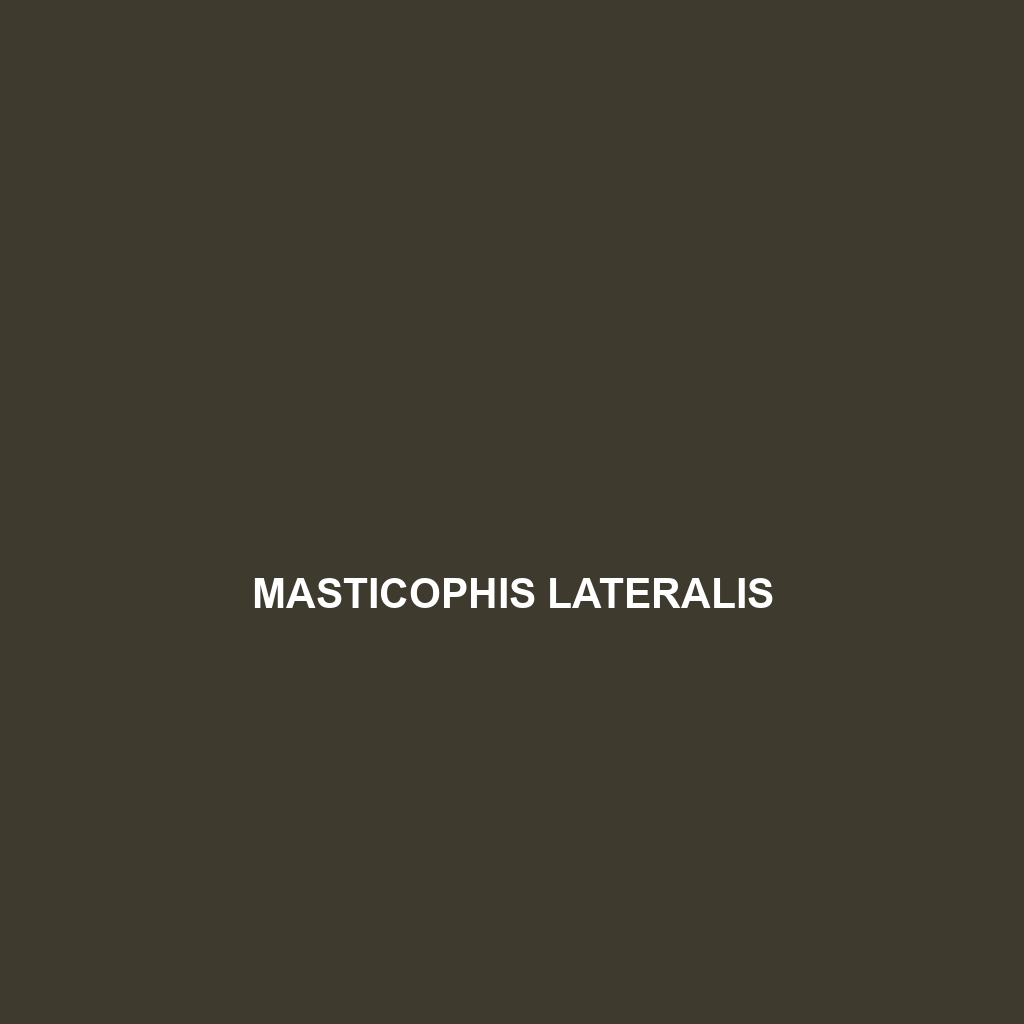Common Name
Masticophis lateralis
Scientific Name
Masticophis lateralis
Habitat
Masticophis lateralis, commonly known as the striped whip snake, primarily inhabits a variety of environments within the western United States and parts of Mexico. This species thrives in dry, warm habitats, typically found in temperate forests, sandy soils, and open grassland areas. It directly favors regions with adequate shelter, like rocky outcrops and dense shrubbery, which provide essential hiding spots from potential predators. Additionally, Masticophis lateralis is often spotted in areas with abundant sunlight, enabling it to regulate its body temperature effectively. These snakes are rarely found in extremely wet environments such as rainforests or marine habitats, as their physiological adaptations are more suited for drier climates.
Physical Characteristics
The Masticophis lateralis is a slender, agile snake, typically averaging between 60 to 90 cm (2 to 3 feet) in length. It is characterized by its distinctive coloration, featuring a light tan or yellowish body adorned with darker brown or black longitudinal stripes. This striking appearance not only makes it visually appealing but also provides effective camouflage against the dry grasses and sandy soils of its habitat. Its narrow head, elongated body, and long, tapering tail contribute to its identity as a whip snake, allowing for swift movements which are advantageous for catching prey and evading danger.
Behavior
Known for its nocturnal behavior, Masticophis lateralis is most active during the night, foraging for food and patrolling its territory. During the day, these snakes can often be found basking in the sunlight to regulate their body temperature. They exhibit solitary behavior outside of the breeding season and are not known for their aggressive nature. During mating rituals, males may engage in displays of dominance through body wrestling, where they try to outmaneuver each other to impress females. This fascinating behavior provides insight into their social interactions and reproductive competition.
Diet
The diet of Masticophis lateralis primarily consists of small rodents, lizards, and various insects, classifying it as a carnivore. The snake employs its speed and agility to hunt and capture prey, often relying on ambush tactics in its natural habitat. Due to its keen sense of smell and vision, it is adept at locating potential meals, hunting primarily during dusk and early dawn when many of its prey species are active. This efficient predation plays a critical role in controlling local rodent populations and maintaining the balance within its ecosystem.
Reproduction
The reproductive cycle of Masticophis lateralis commences in the spring, with mating typically occurring from late April to June. The gestation period lasts approximately 60 to 70 days, after which the female gives birth to live young, usually numbering between 5 to 12 offspring. The newborn snakes are about 20 to 30 cm (8 to 12 inches) in length. Unlike many reptiles, Masticophis lateralis does not exhibit parental care after birth, as the young are independent and must fend for themselves from the moment they emerge.
Conservation Status
The current conservation status of Masticophis lateralis is classified as Least Concern according to the IUCN Red List. This indicates that the species does not currently face significant threats and maintains a stable population. However, habitat destruction due to urban development and agricultural expansion could pose future risks. Conservation efforts are essential to monitor populations and ensure that their natural habitats remain protected.
Interesting Facts
One interesting fact about Masticophis lateralis is its remarkable speed. It is known to be one of the fastest snakes in North America, capable of reaching rapid speeds when hunting or escaping from predators. Additionally, these snakes possess a unique defense mechanism, often fleeing rapidly when threatened, rather than relying on venom, which they lack. Their keen eyesight also allows them to detect movement from considerable distances, making them adept hunters on the prowl.
Role in Ecosystem
Masticophis lateralis plays a significant role in its ecosystem as a predator. By keeping the populations of small rodents and insects in check, these snakes contribute to the balance of their habitats. As both predator and prey, they are an integral part of the food web. Their presence indicates a healthy ecosystem, providing insight into the biodiversity of the regions where they are found. Furthermore, the striped whip snake aids in seed dispersal and pollination indirectly by influencing the populations of smaller animals, thus contributing to the overall health of the environment.
